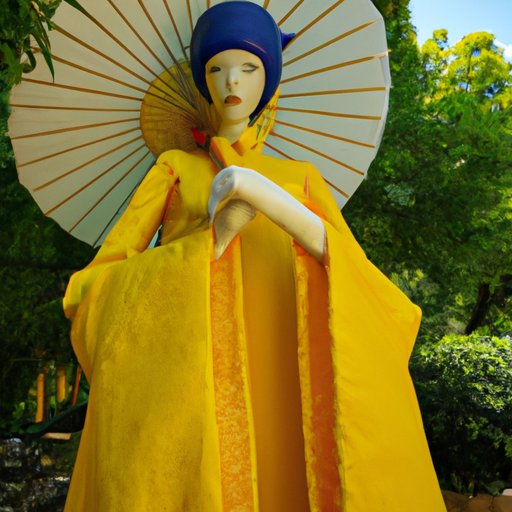I. Introduction
Traditional Chinese styles have evolved over centuries to become a vital part of Chinese culture. The styles can be seen in fashion, design, art, architecture, and language. Understanding these styles is crucial to appreciating the richness and depth of Chinese culture. In this article, we will explore how traditional Chinese styles are reflected in culture, and the significance and importance of preserving them in modern times.
II. The Roots of Chinese Style: Exploring Traditional Clothing, Art, and Architecture
Traditional Chinese clothing, art, and architecture have a rich history that dates back to more than two millennia. They have played a significant role in Chinese cultural heritage. Chinese traditional clothing is characterized by its unique style, bright colors, and intricate designs. Examples of traditional styles are qipao, hanfu, and tangzhuang. In art, calligraphy, painting, and sculpture are the most significant forms. Chinese architecture is known for its curved rooflines, elegant symmetry, and use of wood, stone, and ceramics.
III. From Dynasty to Modernity: The Evolution of Chinese Style through the Ages
Over the years, Chinese style has evolved to reflect the changing times. Historical periods such as the Qin Dynasty, Tang Dynasty, and Ming Dynasty have all influenced traditional Chinese style. Today, traditional Chinese styles can still be seen in contemporary fashion, design, and architecture. Designers incorporate elements of traditional Chinese styles to create a fusion of traditional and modern.
IV. Symbolism and Meaning in Chinese Fashion, Design, and Decor
In Chinese culture, every color, symbol, and pattern has a specific meaning. It is crucial to understand the symbolism and meaning behind various elements when designing fashion and decor pieces. For instance, red symbolizes good luck, prosperity, and happiness, while gold represents wealth and good fortune. Symbols such as dragons and phoenixes represent power and prosperity, respectively. In fashion, artisans incorporate these symbols in embroidery and prints.
V. Creating Harmony: The Role of Traditional Chinese Aesthetics in Modern Culture
Traditional Chinese aesthetics are based on balance, harmony, and proportion. In modern culture, these aesthetics can be applied in architecture, design, and landscaping to create a tranquil and serene environment. The use of space, natural elements, and color combination helps to create balance and harmony, whether in home decor or garden design.
VI. Beyond the Red: A Deep Dive into Traditional Chinese Colors, Patterns, and Fabrics
Traditional Chinese colors, patterns, and fabrics play a vital role in fashion, design, and decor. Colors such as red, gold, white, and black are commonly used to communicate meanings such as good luck, wealth, purity, and power. Fabrics such as silk, brocade, and damask convey luxury and elegance. Patterns such as plum blossom, peony, and dragon are commonly used in fashion and decor to represent various cultural beliefs and values.
VII. Conclusion
Traditional Chinese styles reflect a rich cultural heritage that has been passed down from generation to generation. The styles have evolved over time, and today they are still relevant in contemporary fashion, design, and architecture. It is essential to understand the meaning and symbolism behind various traditional elements to appreciate and respect the culture. While it is necessary to preserve traditional Chinese styles, it is equally important to adapt them to modern times. We recommend exploring traditional Chinese styles to gain a deeper appreciation of the depth and richness of Chinese culture.
(Note: Is this article not meeting your expectations? Do you have knowledge or insights to share? Unlock new opportunities and expand your reach by joining our authors team. Click Registration to join us and share your expertise with our readers.)
